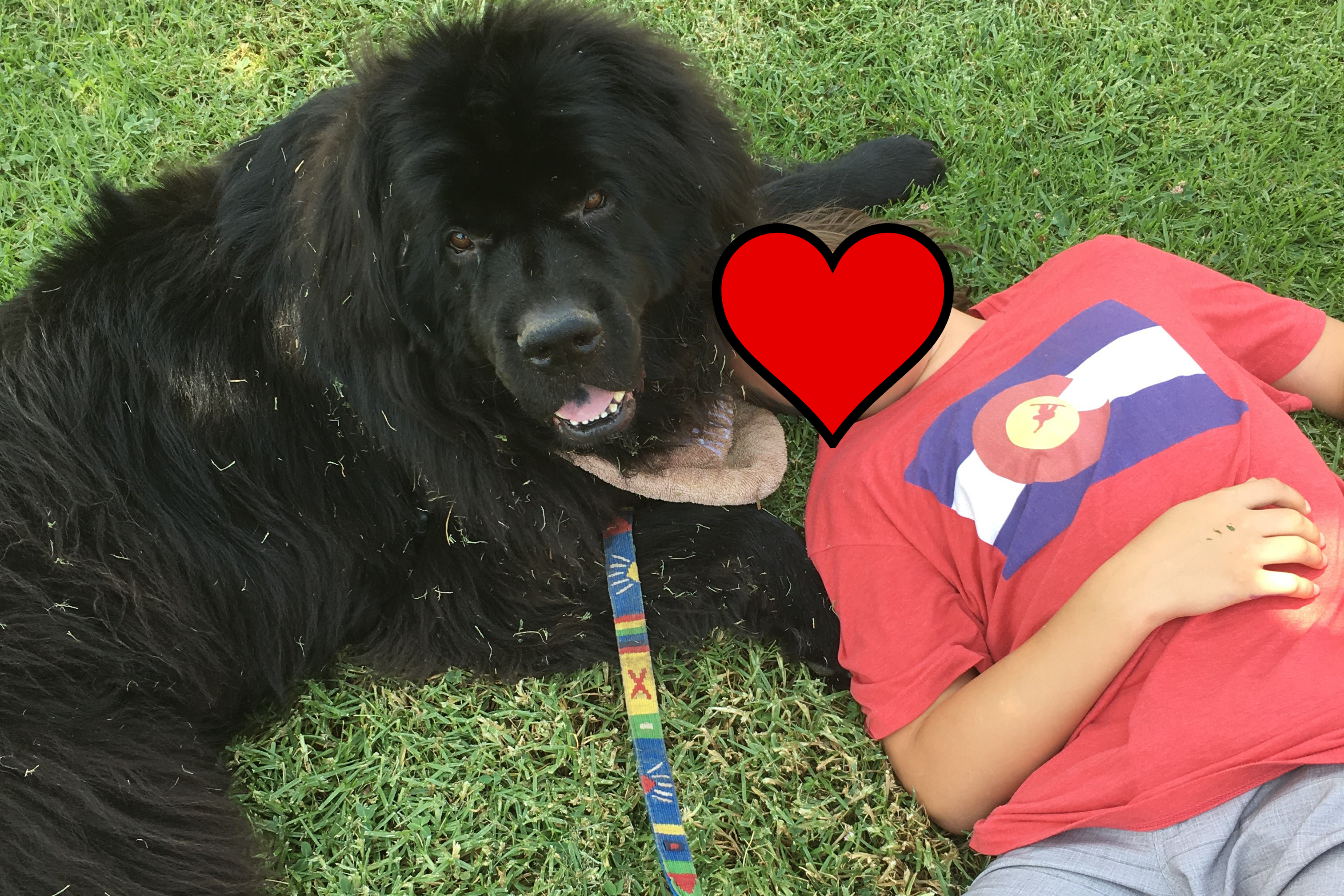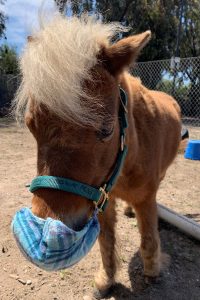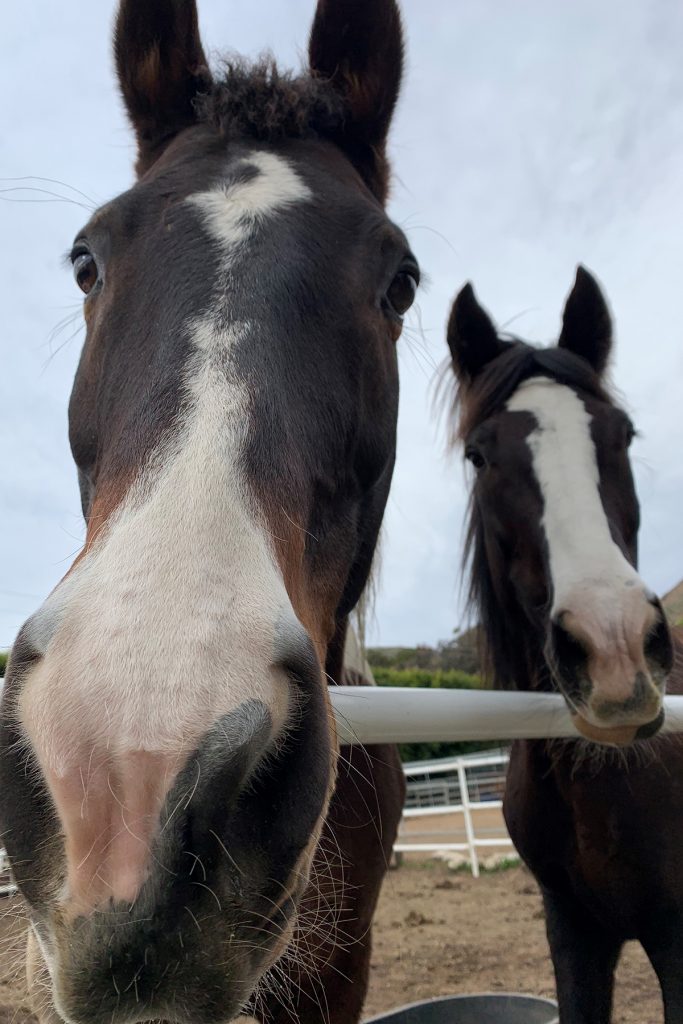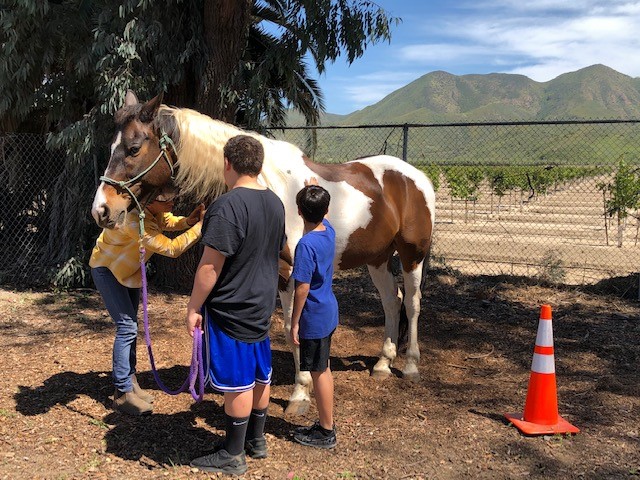
Animal Assisted Therapy – An effective (and adorable) therapeutic approach
An effective (and adorable) therapeutic approach

Dogs are often used in hospitals, mental health institutes, and rehabilitation centers where their presence diminishes feelings of fear, distrust, rage, and aggression and helps enrich interpersonal relationships. During a visit from therapy dogs, patients break from their monotony and share moments that allow them to disconnect from their sickness and feel secure and hopeful (The Modern Use of Animal Assisted Therapy 2018). What better therapy for children and youth who have experienced complex traumas and suffer from severe emotional and behavioral issues?
Casa Pacifica’s use of dogs and animal assisted therapy dates back to 2005 with the addition of our first Newfoundland dog Archie. The addition of this “gentle giant” brought an immediate sense of home and comfort to the children of Casa Pacifica. Baker joined the family in 2011, his calm and comforting presence made the intake department a much warmer place – youth could often be seen laying on the floor with him or taking a moment to pet him as they left or entered campus.

Pearl
Although Archie and Baker are gone, other “Newfies” carry on his loving legacy – Otis and Pearl. Otis’ handler, Dr. Josh Lepore, Senior Director of Campus Services received a certificate in Animal Assisted Therapy at University of Denver School of Social Work. Otis is the campus’ most popular resident and keeps a very busy schedule between appointments with the kids and showing new pup Pearl the ropes. “We’ve seen kids that were previously unresponsive to therapy sit down with Otis and start talking to him as if they’ve known him for years. The dogs have a way of bringing down people’s guards,” said Dr. Lepore, reflecting on Casa Pacifica’s use of animal-assisted therapy.
After seeing such success with the dogs on campus, we began taking the youth to visit local ranches who offered equine therapy. Again, we saw the youth connect the animals on another level. Over the last year, we’ve been fortunate to have the opportunity to work with Corey Cardenas from Whole Heart Equine Assisted Therapy. Corey is an EAGALA (Equine Assisted Growth and Learning Association) certified equine specialist who generously brings her four horses to Casa Pacifica’s Camarillo campus every Wednesday. Corey recently shared her thoughts on bringing equine therapy to Casa Pacifica. “Every week, my horses and I are so excited to come and visit Casa Pacifica. The youth have been so grateful to have the horses there regularly. Especially now, when our world is turned upside down, the horses offer a non-judgmental, solid, and joyful presence for everyone involved.”

Koa and Grace
Seeing the results
When Corey and her horses first started equine therapy on campus, Molly (name changed for privacy) was nervous. She seemed especially hesitant about interacting with the larger horses. She was more comfortable with the mini horses so Dan Villa, Casa Pacifica’s Therapeutic Recreation Program Lead started slowly by having her groom the miniatures, as she became more comfortable she moved on to help train them. Gradually, she felt more comfortable training and being around the horses in general, she even began to look forward to their visits. “I recently saw Molly ride a horse for the very first time. The joy on her face and the uneasiness was fun to see. It’s incredible all the new things we expose our kids to for the very first time,” said Dan about Molly’s progress. Since the incorporation of equine therapy staff have seen a more open and responsive Molly. We look forward to seeing even more progress in the coming weeks.
Why integrate animal assisted therapy?
On top of the anecdotal evidence we see every day, numerous studies have shown animal assisted therapy benefits not only mental health but physical health too. The UCLA Health 2019-2020 statistics on animal assisted therapy outlined some of these benefits.

Bella and Shadow
Benefits for mental health:
- The simple act of petting animals releases an automatic relaxation response.
- Reduces loneliness.
- Provides comfort.
- Increases mental stimulation.
- Can provide an escape or happy distraction.
- May help break the ice.
- May reduce the initial resistance that might accompany therapy.
Benefits for physical health:
- Breathing slows in those who are anxious.
- Participants were motivated, enjoyed the therapy sessions more, and felt the atmosphere of the session was less stressful during animal-assisted therapy.

Kids grooming horses
In conclusion
Effective use of animal assisted therapy can go a long way in breaking down barriers and speeding up the healing process. We are proud to integrate animal assisted therapy through the use of canines and equines and have seen remarkable results. We look forward to continuing this therapy as part of our cutting-edge full spectrum of services. To learn more about Camino a Casa’s services, visit www.caminoacasa.org.
- The Modern Use of Animal Assisted Therapy (2018) Retrieved from https://www.therapydogs.com/animal-assisted-therapy
- https://www.uclahealth.org/pac/animal-assisted-therapy



